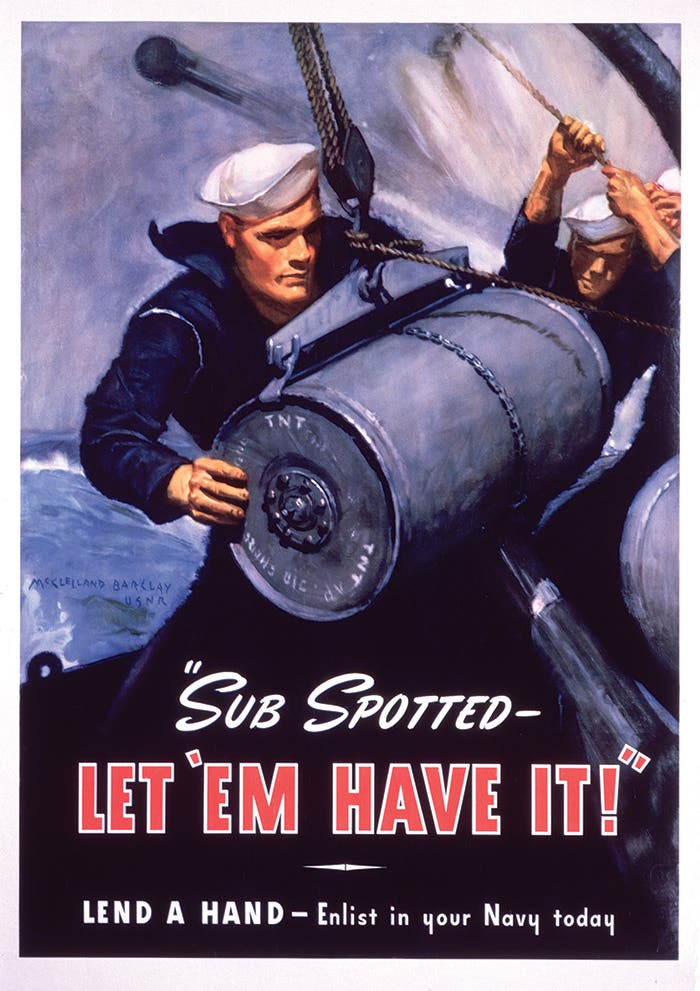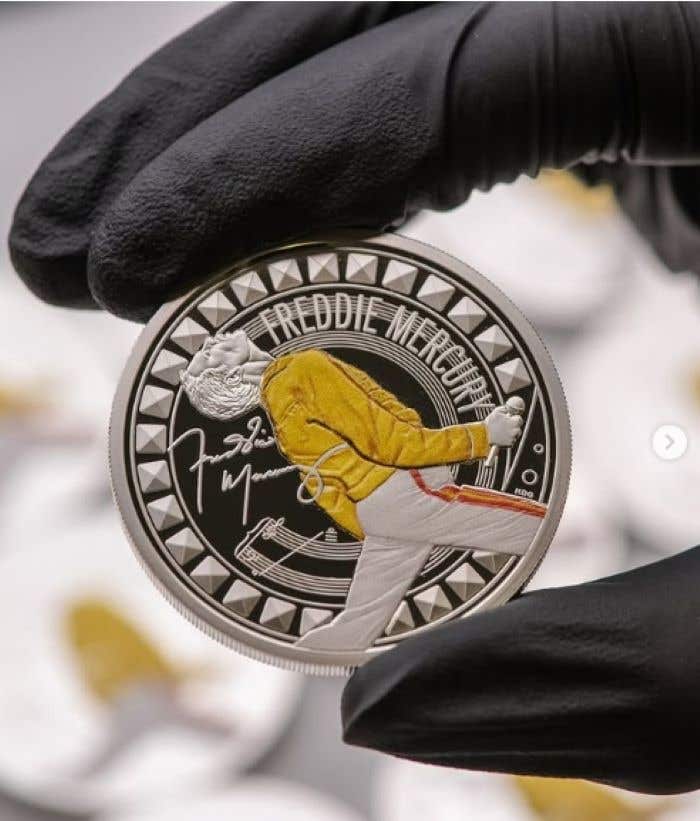Remembering McClelland Barclay Through Jewelry
Navy hero McClelland Barclay leaves behind a sparkling legacy.
Baby Boomers and those on the cusp of Gen X had the good fortune of being raised by parents from the Greatest Generation—individuals who weathered the Great Depression and survived the challenges of World War II. I am one of those babies. And I must say, jewelry stories connected to the era when my folks came of age always pique my curiosity. In fact, many of the companies producing jewelry during the late 1930s and early ‘40s supported America’s war efforts in their factories, and at least one I know of used scrap materials from munitions as components.
How does this historical period coincide with jewelry marked McClelland Barclay? If you’re not familiar with this American illustrator, he perished in battle while serving in the Navy during World War II. When I first admired the Art Deco jewelry marked McClelland Barclay back in the early 1990s, I didn’t realize his life had been cut short by the war or that he had served his country. I also had no clue about all his other accomplishments as an artist until years later.
With that in mind, I’ll delve briefly into his background and then give you more details about the jewelry with his name on it. As I learned reading my friend Patricia Gostick’s book, McClelland Barclay: Painter of Beautiful Women and More, there’s much more to this jewelry story than I first realized.
McClelland Barclay’s Artistry
At a young age, Barclay pursued his passion for art, attending the St. Louis School of Fine Arts. He continued his training at the Corcoran School of Fine Arts in Washington, D.C., and learned alongside notables like Norman Rockwell at The Art Students League in New York. Barclay also studied at the Art Institute of Chicago before starting his career in 1915, creating illustration art for several ad agencies. His war service came during World War I when he joined the U.S. Naval Reserve and created illustrations encouraging support for the Red Cross and war bonds, along with recruiting posters for the U.S. Navy.


After the Great War, he returned to work as a commercial artist. One of his most recognizable accomplishments was the Fisher Body Girl he painted in conjunction with General Motors, which was just as popular as the earlier, more familiar “Gibson Girls” and “Christy Girls.” He also illustrated advertisements for well-known brands such as Coca-Cola and Texaco. As an accomplished sculptor, he started his own line of metal decorative objects for the home under McClelland Barclay Art Products, Inc. in the 1930s.
As war loomed again, in 1939, he reenlisted in the U.S. Naval Reserve. His art was used for recruitment purposes yet again, and he painted numerous officers in the U.S. military. After being struck by a torpedo, the supply vessel on which he was working was reported lost at sea in July 1943. From 1938 onward, jewelry bearing the McClelland Barclay name capitalized on his fame as a popular artist.
About the Jewelry Marked McClelland Barclay
I thought all McClelland Barclay jewelry had an Art Deco look for the longest time. While these Deco designs are not overly abundant by any means, the gold-plated necklaces, earrings, bracelets, and brooches embellished with rhinestones are some of the most frequently found items bearing the McClelland Barclay mark. Like all jewelry with his name on it, these designs were produced by Rice-Weiner & Co.
Sterling silver jewelry was also made during the late 1930s, as noted in quotes shared from Women’s Wear Daily that Gostick mentions in her book. These pieces also have a Deco vibe, but many feature animals like birds, horses, or deer. Charm bracelets from this collection are particularly hard to come by today, including one that shows the life stages of a couple from courting through starting a family.


By 1940, new lines were introduced, including a series incorporating gold-plated maple leaves embellished with clear pavé set rhinestones. A “Fashion Takes to Wings” ad campaign in 1941 announced necklaces, bracelets, and brooches with two-tone wings reminiscent of military emblems. When Barclay died in the Pacific in 1943, a last showing of jewelry stamped with his name was held at the Rice-Weiner headquarters. Among those pieces were several more lines of sterling silver jewelry in gold-plated versions with rhinestone embellishments and a series of Latin-inspired head pins. These are all viewed as treasures by collectors, but did McClelland Barclay actually design them? The answer may surprise you.
Busting Myths About McClelland Barclay Jewelry
We often glean information about jewelry designers and manufacturers from magazine editorials and advertising. After all, everything in print—especially in an ad—is true, right? When it comes to vintage jewelry, that’s not always the case. Time and again, historians digging past the surface through company archives and interviews with former employees find that what’s shared in features selling products doesn’t always tell the whole story.
Remember the Women’s Wear Daily announcements I mentioned earlier? Those blurbs led researchers to believe that McClelland Barclay designed all the jewelry items with his name on them. Some of the marked pieces were introduced while he was already enlisted in the service, so more suppositions that he sent sketches back to Rice-Weiner from the battlefront were made. As it turns out, none of that is true.
When Gostick interviewed former Rice-Weiner CEO Howard Weiner in 2006, he relayed that the partnership between his firm and Barclay was a licensing agreement under which Barclay was paid 10 percent of the sales proceeds. The individual working for Rice-Weiner who designed these pieces was Louis C. Mark, who also designed the movie-related lines marked Alexander Korda made by Rice-Weiner.
This information doesn’t make the jewelry any less lovely or diminish the fact that Barclay was a revered illustrator who gave his life while supporting his country. It merely gives credit where credit is due to Mark for this design work and helps to explain why the styles produced under the licensing agreement vary so widely.
I recommend Gostick’s book as a must-have for the reference library of any art lover or jewelry enthusiast. It includes a more complete catalog of the jewelry produced with the McClelland Barclay mark and a generous sampling of his illustrative work. Check it out on the website.
Pamela Wiggins Siegel has been buying, selling, and collecting costume jewelry for more than 30 years. She is the author of Warman’s Costume Jewelry (Krause Publications) and the co-founder of Costume Jewelry Collectors Int’l, an organization dedicated to hosting events and providing educational resources for collectors. Visit her online at www.chicantiques.com and www.cjci.co.
You may also like:
Pamela Wiggins Siegel has been buying, selling and collecting costume jewelry for more than 30 years. She is the author of Warman’s Costume Jewelry and the co-founder of Costume Jewelry Collectors International, an organization dedicated to hosting events and providing educational resources for collectors. Visit her online at www.chicantiques.com and www.cjci.co.








